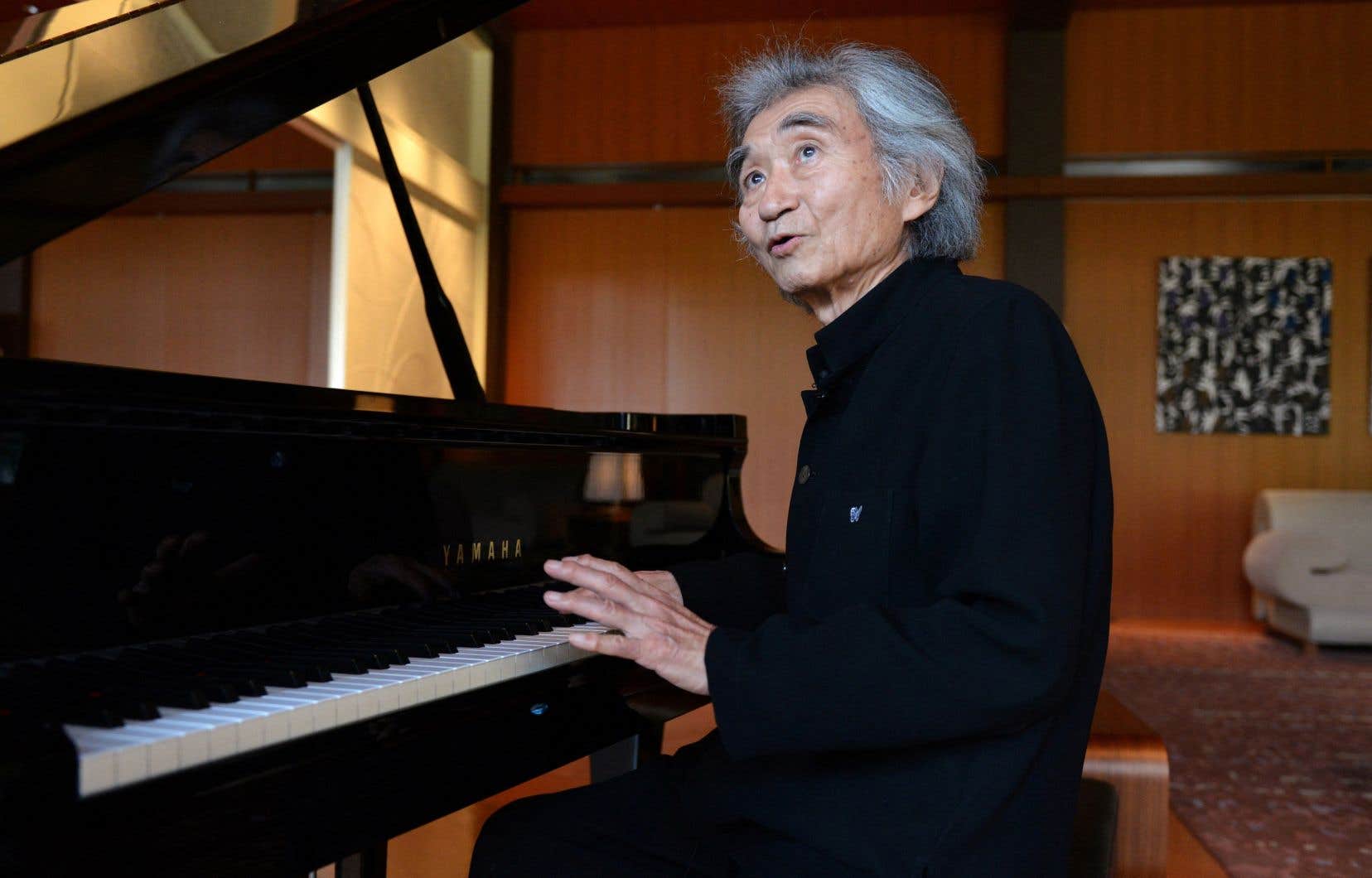Japanese conductor Seiji Ozawa died of cardiac arrest on February 6 at the age of 88, his family announced to the Japanese daily Asahi Shimbun. He was the first major Asian artist of international renown in the world of classical music.
Seiji Ozawa was born in 1935 in a country where Western classical music did not exist: the city of Shenyang, in the Chinese province of Manchuria, then occupied by the Japanese. He returned to Japan with his parents at the age of five, learned piano as a child, but injured his fingers playing rugby and turned to conducting, which he learned under the guidance of Hideo Saito.
The West discovered him when he won the Besançon International Competition for Young Conductors in 1959, created in 1951. The candidate, whose registration reached the organizers at the last minute, came by scooter from Paris; he celebrates his 24th birthday on the day of the final.
It is Eugène Bigot (1888-1965) who chairs the jury, but this jury includes another eminent member, the famous French conductor Charles Munch (1891-1968), then music director of the Boston Symphony Orchestra, who takes it under his wing and invited him to conduct at Tanglewood, his orchestra’s summer home. Another competition was held there, which Ozawa won, which attracted the attention of Leonard Bernstein.
After a discussion with the maestro “in a terrible bar in Berlin”, as Ozawa recounted to journalist Helena Matheopoulos in 1982 in Maestro. Encounters with Conductors of Today (Hutchinson), the young man, who barely spoke English at the time, was appointed assistant conductor of the New York Philharmonic. But an assistantship with Herbert von Karajan is superimposed on the planned schedule. Maestro Bernstein, a good prince, agrees to postpone taking office.
Munch, Bernstein, Karajan: in a little over a year, three giants have ensured the emergence of a great chef. Because these meetings forged Seiji Ozawa.
If Emmanuelle Giuliani, in The cross, titles his tribute on this day “The conductor who danced with the orchestra”, it is because this image of Seiji Ozawa leading an orchestra with his body into a musical communion is undoubtedly the one that will remain of him. As far as we are concerned, the memory imprinted forever is that of a Waltz by Ravel at the conclusion of a French program in Paris, when he was conductor of the Orchester national de France. From his body language could emanate a kind of electricity causing a collective trance. And that’s what makes one of his first and greatest records so valuable, The Rite of Spring with the Chicago Orchestra (1968), an RCA recording whose full significance had not really been understood.
“In Japan, I was taught leadership in a rigid way, in a sort of mold. Karajan made me understand that there is not “one” way and that I had to be flexible,” he told Helena Matheopoulos. In New York, Ozawa experienced poverty—his contract paid him $100 a year and $2 a week—but Bernstein’s infusion of knowledge and musical flair was priceless.
With such a resume, Ozawa was appointed senior chief of NHK in Tokyo. He was fired in no time: his ideas and his style had become incompatible with the tastes and colors of the country he had left two or three years earlier!
The Ozawa phenomenon
This debut shows how Ozawa has quickly become an integral part of the “world heritage” of the musical world. Obviously, after his success, he became an icon in his country. Because the career has been phenomenal.
From 1964 to 1968, he became musical director of the Ravinia Festival, summer residence of the Chicago Symphony, hence his relationship with this orchestra. He was musical director of the Toronto Symphony from 1965 to 1969, where he made his first recordings, including a disc of Canadian music never reissued. He left Toronto to accept the direction of the San Francisco Symphony in 1970.
But it was in Boston that he carved his legend from 1973, and for a mandate of almost 30 years. With the Boston Symphony, Ozawa will undertake a historic tour of China, where Western music had been banned since the Mao years. In 1989, he headed the Symphony No. 9 of Beethoven in Beijing.
Seiji Ozawa was also musical director of the Vienna Opera from 2002. The Austrian capital is adopting him as it once adopted Leonard Bernstein. He conducted the New Year’s concert there twice and the Vienna Philharmonic entrusted him with the concert for the centenary of Herbert von Karajan. In the Land of the Rising Sun, he founded the New Japan Philharmonic Orchestra in 1972, the Saito Kinen International Orchestra in 1984 and the Matsumoto Saito Kinen Festival in 1992, both in honor of his master.
A long illness
His health slowly declined starting in 2006, when he was diagnosed with esophageal cancer. He gave up his obligations in Vienna in 2010. He then suffered from recurring back problems. Seiji Ozawa has appeared very diminished in recent years, notably alongside his friend Zubin Mehta, who had emerged around the same time as him and who had also been recommended by Charles Munch to Pierre Béique in Montreal.
The musical director of the Saint-Louis Symphony Orchestra, Stéphane Denève, close to Seiji Ozawa, conducted the 2023 edition of the Matsumoto Festival in front of a very diminished conductor made speechless by illness: “I like to think back to the good moments since 1998. We laughed a lot. He was a happy man, full of life, humble, open, with a prodigious memory, whose presence had a phenomenal impact on the sound. »
Seiji Ozawa, who created the opera in Paris Saint Francis of Assisi de Messiaen in 1983, with Kent Nagano as assistant, leaves nearly 150 recordings made notably for RCA, Philips, EMI and Sony.
He was a very complete conductor, equally inspired by the symphonic repertoire and opera. He consistently promoted, particularly during his years in Boston, the music of French composer Henri Dutilleux.
